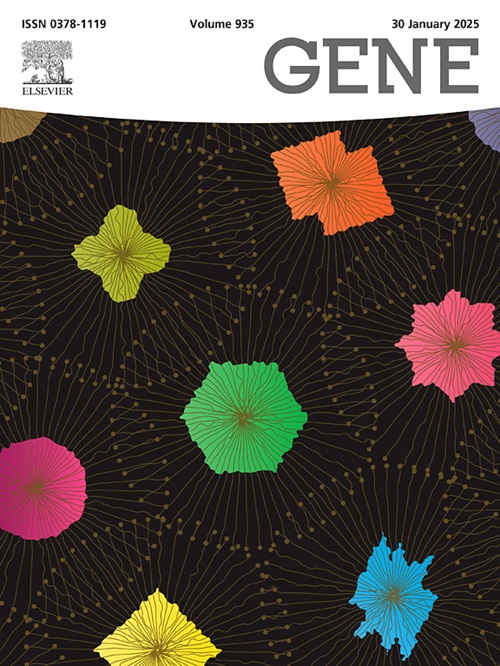人类肿瘤小核仁RNA宿主基因14 (SNHG14)的泛癌分析
IF 2.6
3区 生物学
Q2 GENETICS & HEREDITY
引用次数: 0
摘要
长链非编码rna (lncRNAs)与肿瘤的发生和发展有关。其中之一,短核仁RNA宿主基因14 (SNHG14),由于其在各种肿瘤类型中的异常表达而显示出重要的预后价值。本研究利用来自基因型-组织表达和癌症基因组图谱数据库的数据,研究了SNHG14在各种癌症中的表达模式、生存结果和肿瘤分期。Cancer Genome Atlas数据库显示,与正常组织相比,SNHG14在5种肿瘤类型中过表达,在15种肿瘤类型中下调。特别是,SNHG14表达增加的间皮瘤和胃腺癌患者的总生存率降低。我们对SNHG14的上游调控因子和下游靶基因进行了全面的文献综述,揭示了其在肿瘤发生中的作用。该综述强调,SNHG14在许多癌症中经常过表达,并主要作为癌基因发挥作用。SNHG14通过调节各种microrna发挥作用,这些microrna随后调节靶基因的表达,影响肿瘤发生发展的关键信号通路。此外,生物素- dna拉下联用质谱鉴定了几种转录因子,包括c-Myc和CEBPB,是SNHG14转录的关键调控因子。这些发现强调了SNHG14复杂的转录调控及其在癌症相关过程中的潜在参与。在这项研究中,我们系统地阐明了SNHG14的上游转录调控因子和下游信号通路,为其在癌症生物学中的关键作用提供了新的见解。这项综合研究强调了SNHG14作为一种有效的预后生物标志物和治疗癌症的靶点。本文章由计算机程序翻译,如有差异,请以英文原文为准。
A pan-cancer analysis of small nucleolar RNA host gene 14 (SNHG14) in human tumors
Long non-coding RNAs (lncRNAs) are associated with tumorigenesis and progression. One of these, short nucleolar RNA host gene 14 (SNHG14), has exhibited significant prognostic value due to its aberrant expression across various tumor types. This study investigates the expression patterns, survival outcomes, and tumor stages associated with SNHG14 across various cancers, employing data from the Genotype-Tissue Expression and The Cancer Genome Atlas databases. The Cancer Genome Atlas database showed SNHG14 overexpression in five tumor types and downregulation in 15 tumor types compared to normal tissues. In particular, patients with increased SNHG14 expression had reduced overall survival with mesothelioma and stomach adenocarcinoma. A comprehensive literature review was conducted to explore SNHG14′s upstream regulators and downstream target genes, shedding light on its role in tumorigenesis. The review underscores that SNHG14 is frequently overexpressed in numerous cancers and predominantly functions as an oncogene. SNHG14 exerts its effects by regulating various microRNAs, which subsequently modulate the expression of target genes and influence critical signaling pathways involved in tumor development and progression. Furthermore, biotin-DNA pulldown coupled with mass spectrometry identified several transcription factors, including c-Myc and CEBPB, as key regulators of SNHG14 transcription. These findings highlight the intricate transcriptional regulation of SNHG14 and its potential involvement in cancer-related processes. In this study, we systematically elucidated the upstream transcriptional regulators and downstream signaling pathways of SNHG14, providing novel insights into its critical role in cancer biology. This comprehensive research highlights SNHG14 as an effective biomarker for prognosis and a target for treating cancer.
求助全文
通过发布文献求助,成功后即可免费获取论文全文。
去求助
来源期刊

Gene
生物-遗传学
CiteScore
6.10
自引率
2.90%
发文量
718
审稿时长
42 days
期刊介绍:
Gene publishes papers that focus on the regulation, expression, function and evolution of genes in all biological contexts, including all prokaryotic and eukaryotic organisms, as well as viruses.
 求助内容:
求助内容: 应助结果提醒方式:
应助结果提醒方式:


